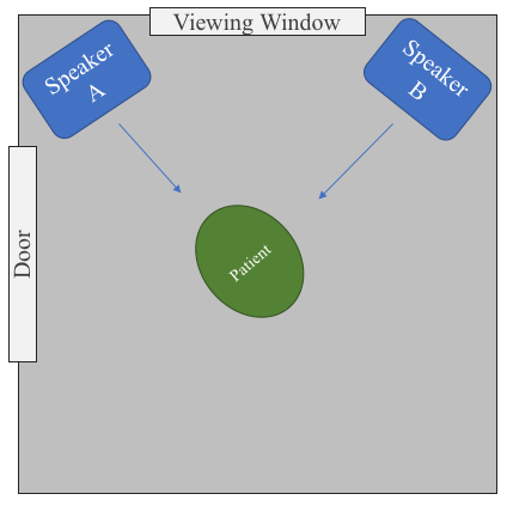Question
What clinical considerations are in your treatment pathway for Single Sided Deafness/Unilateral Hearing Loss patients?
Answer
We modified our clinical practice in response to the expansion of candidacy criteria for cochlear implantation to include individuals with unilateral hearing loss (UHL) and single-sided deafness (SSD). Cochlear implant recipients with UHL/SSD have been shown to experience significant improvements with their cochlear implant as compared to preoperative performance on measures of speech perception in quiet and background noise, localization and quality of life.1-3 With this evidence in mind, our clinic modified our assessment and MAPping protocols for patients with UHL/SSD to target their specific needs.
From a candidacy standpoint, we assess the patient’s performance with each ear individually as well as their binaural abilities. Our modified protocol includes the assessment of speech perception in the best aided condition in co-located and spatially-separated noise. This involves testing in three conditions:
- Speech and noise from the front speaker
- Speech from the front speaker and noise from a speaker towards the better ear
- Speech from the front speaker and noise from a speaker towards the poorer ear
This allows us to better represent the challenges a patient with UHL/SSD experiences in their everyday life. We have been able to accomplish this testing by utilizing our clinic’s 2-speaker set up, as seen in Figure 1. In this way, we are better able to determine the optimal treatment option for each ear with the goal of rehabilitating binaural hearing. We have also added subjective questionnaires to our assessment protocol to allow us to evaluate the quality of life benefit in this population. Clinically, we have used the THI (Tinnitus Handicap Inventory) and the SSQ (Speech Spatial Qualities of Hearing).
Our MAPping approach aims to individualize programming to optimize patient outcomes. This includes methods to ensure appropriate loudness and optimal sound quality with the cochlear implant, including targeted measurement of threshold and comfort levels, incorporation of objective measures and loudness balancing across channels and between ears. We also strongly recommend aural rehabilitation, particularly within the initial months of cochlear implant use.
We think this modified, evidence-based protocol will help us identify the best treatment for the individual and support them to achieve their optimal performance.

Figure 1: Depiction of our 2-speaker set up in the sound booth that allows for the assessment of speech perception in co-located versus spatially-separated noise. We position the patient to face either Speaker A or Speaker B when presenting the noise 90 degrees to the better hearing versus poorer hearing ear.
To read more about how individuals with UHL/SSD can now seek treatment with a cochlear implant from Cochlear to hear with both ears, click here!
References:
- Buss E, Dillon MT, Rooth MAet al. Effects of Cochlear Implantation on Binaural Hearing in Adults With Unilateral Hearing Loss. Trends Hear 2018; 22:2331216518771173.
- Dillon MT, Buss E, Rooth MAet al. Effect of Cochlear Implantation on Quality of Life in Adults with Unilateral Hearing Loss. Audiol Neurootol 2017; 22:259-271.
- Dillon MT, Buss E, Anderson MLet al. Cochlear Implantation in Cases of Unilateral Hearing Loss: Initial Localization Abilities. Ear Hear 2017; 38:611-619
Protocol general refrences:
- Firszt JB, Reeder RM, Holden LK, Dwyer NY, Asymmetric Hearing Study T. Results in Adult Cochlear Implant Recipients With Varied Asymmetric Hearing: A Prospective Longitudinal Study of Speech Recognition, Localization, and Participant Report. Ear Hear 2018; 39:845-862.
- Tavora-Vieira D, Rajan GP, Van de Heyning P, Mertens G. Evaluating the Long-Term Hearing Outcomes of Cochlear Implant Users With Single-Sided Deafness. Otol Neurotol 2019; 40:e575-e580.

